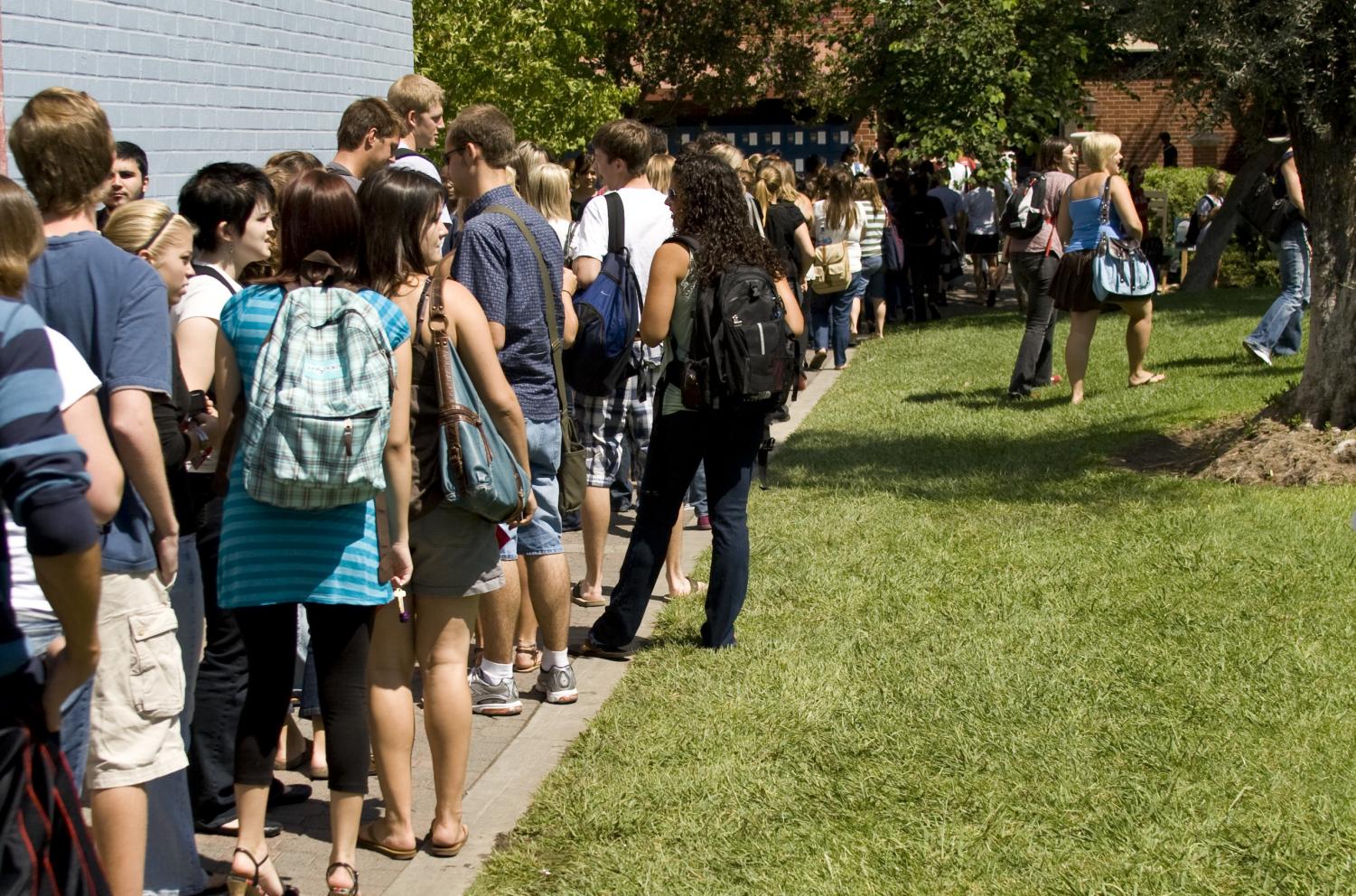Despite a closing gap to the city-imposed limit on the number of students allowed to live on campus and an inability to build more dorms, Biola administrators continue to affirm that everyone who is qualified to attend the university will be admitted.
If Biola sticks with its growth model of 2.6 percent growth per year, La Mirada’s limit on Biola’s student population will be reached by 2010, according to Ken Bascom, senior director of facilities planning.
“La Mirada only has one number that they have actually imposed on us, that is, 5,000 full-time equivalent students enrolled on this 95-acre campus,” said Bascom.
Although part-time students, BOLD students in various locations and students studying abroad are not included in the 5,000, the Biola population is edging closer to this limit. Last fall there were 4,546 such full-time students, and this year there are expected to be slightly over 4,700.
Furthermore, the City of La Mirada will not allow any more residence halls to be built on campus. According to Bascom, Biola’s facilities administrators have reacted by purchasing as many local apartments as possible, such as those along Rosecrans.
“The student population is definitely growing faster than our facilities are growing,” Bascom said. “There are really only a few hundred more places on this campus.”
The numbers causing this crowding, however, were expected. This year the growth of Biola’s student body is projected to near four percent, a little more than Biola’s 2.6 percent growth model. Last year 1,132 new undergrads registered before the ending date, and this fall the final count is currently at 1,183.
“It’s moderate; it’s not huge,” said Andre Stephens, director of undergraduate admissions, about this year’s expected growth.
This moderate growth, though, is still causing strains on Biola’s campus.
Last fall there were 173 tripled rooms assigned throughout the dorms, according to Don Sims, senior director of auxiliary services. This year, there are 282 so far – over a 60 percent increase. Increasing the number of triple rooms can only be continued for about three or four more years before the dorms become too crowded, according to Bascom.
Some students find living in a triple challenging. This year, junior Aly Batman lives in a room in Hope designed to be a triple, but last year she had two roommates in a room meant for two residents.
“Now that we have more room to move around and to not be on top of each other, it’s a little bit better morale [in] the room,” she said.
Unlike many larger schools, Biola’s students are able to live on campus all four years if they desire, which is especially appealing to some in light of the rise in housing prices. Although this allowance is a cause for the crowding, Bascom believes that the student development staff has created an important philosophy about the resident population.
“They want a mixture of more mature students that are on campus in the residence halls and mentoring [younger students] and just have a little bit more life experience,” he said.
Junior Lisa Bucek doesn’t have a car and finds living on campus convenient, but said she also enjoys the community.
“Just being here I feel more involved and in the community, whereas if I were to live off-campus, it’s more up to me to get involved,” she said.
In addition to worries about a full campus, a new fear has also arisen. Trends suggest that in the next year or so the number of high school graduates will peak and then decline until 2015, heightening competition for college admissions, according to the New York Times.
Stephens believes that competition may potentially be felt even more so among Christian universities.
“It’s not only that we have to beat the odds, so to speak, with the graduation rates, but we also have to beat the odds in what some researchers call a shrinking pool of evangelical Christians,” he said.
Stephens said he is thankful for the high number of students who started at Biola this year, especially because of the financial strains the nation is experiencing. This semester, double the number of usual students withdrew their deposits, many for that reason.
“Even though it may seem crowded in the cafe, I think it’s exciting to see, in light of the financial difficulties that many families are facing with the economy, that students are still committed and families are committed to Christian higher education and making sacrifices to be at Biola,” Stephens said.
Despite the looming challenges, Bascom remains confident that Biola will continue to admit everyone who is qualified.
“That was something Dr. Cook believed real strongly and that Dr. Corey has picked up, too — that we need to continue to offer a Biola education to every student who’s academically and spiritually qualified to be here,” Bascom said. “There are some arguments for limiting the student body size, but that’s not the direction our board and our president have chosen to go, so the rest of us get to pick up the challenge .”
Dr. Corey has a good team prepared to do that, said Bascom, and now the university is looking toward and praying for God’s provision, especially financially.







